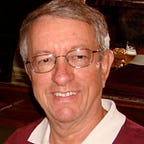Sergeant Major Savenaca Does His Duty
Story and photos by John Penisten, U.S. Peace Corps, Fiji I Group, 1968–69
(Note: this story is adapted from the book Green Hills and Blue Lagoons: A Peace Corps Memoir which details the experiences and adventures of the writer, a member of the very first U.S. Peace Corps group to serve in the Fiji Islands in 1968–69.)
Savenaca Koroinivalu was the Field Officer/Buca Bay for the Fiji Department of Agriculture. He was middle-aged, stood 5’9”, weighed about 175 lbs. He was a native of Kadavu Island, a fact of which he was quite proud, as most Fijians are of their home island.
I came to know Savenaca in 1968–69 when, as a U.S. Peace Corps Volunteer, I was assigned to the Buca Bay Agriculture Station in Cakaudrove Province, Vanua Levu Island to conduct the first agriculture census of the Province. Savenaca was the Field Officer there and was essentially my departmental colleague. I was essentially adopted by Savenaca and his family and was well looked after during my time there.
Save (Sa’vay) for short, was an ex-Sergeant Major in the Fiji Military Forces. He carried the military bearing and strong will and discipline into his daily life. He was however a true Fijian with a typical love of life, a joke, and a good time. Save became my friend, co-worker, confidant, and is some ways, a father. He taught me much about the agriculture department to which we were both responsible, the country, customs, and the language. Because Save spoke very good English however, we often used that as our communication mode, especially during work situations.
There was so much that I shared with Save: many a tanoa of grog in my bure, a night of cards, good times in travelling throughout our area of Buca Bay, and many a cigarette break.
There were many interesting things that we did together. One time while visiting new development blocks on Kioa Island, the boat that brought us to Kioa failed to wait for us to return and left without us. There we were, stranded on Kioa, a couple of miles across Buca Bay from Tukavesi, our station and home, with no way to get back. Hearing that there was a motor boat down the coast that could take us back across the bay, we decided to try to catch that boat. To get there, we borrowed another boat, a bulky old fishing skiff about 20 feet long. I sat on the bow deck and with the short paddle tried to keep the boat heading in the right direction as we followed the coastline. Save used his paddle at the stern.
On a very hot afternoon such as it was, it was a real effort for the two of us to move that boat the three miles or so to where we had to go. Due to the island’s coastal terrain, there was no foot trail to follow to where we needed to go, so we had no choice. Fortunately it was a calm day and we followed the shoreline, mangrove swamps, and reefs. We laughed and joked about it later but always remembered the day we paddled the boat around Kioa.
Another example of Save’s interest and devotion to duty, Fijian style, was the time just the two of us killed a whole bottle of scotch whiskey in one sitting. Among the many times we shared a grog session or a bottle, this instance stands out above all others.
Fijians, of course, drink to get drunk. Pure and simple. And Save being the strong willed person he is, disliked leaving a task incomplete. We had a bottle one night and got together in my bure for some drinking. I had in mind a couple of friendly social drinks before dinner but Save thought differently.
One drink led to another and another. Part way through the bottle, I began to feel pretty high. I meekly suggested that we finish our glasses and save the rest of the bottle for the next time. Save, astounded by the mere thought responded, “But John, we must finish
the bottle. It is our duty!”
There was no arguing with that man when it came to fulfilling one’s duty. For Sergeant Major Savenaca, duty called and there was only one way to answer: finish that bottle. We proceeded to get fantastically smashed. Sitting in my bure, which served as a sort of recreation room as well as sleeping quarters for me, we were oblivious to the rest of the world.
Old Sergeant Major Savenaca would not shirk his duty to God, to Queen, to Country, or to Bottle!
Other stories about the Peace Corps in Fiji:
About the Writer
John Penisten is a photojournalist and longtime resident of Hilo on the Big Island of Hawai’i. He has authored the guidebooks Hawai’i the Big Island, Kaua’i the Garden Island, Adventure Guide to Hawai’i, and Experience the Big Island: The Road to Adventure. His personal adventure book Green Hills and Blue Lagoons: A Peace Corps Memoir covers his travels and experiences as a U.S. Peace Corps Volunteer in the Fiji Islands, South Pacific. His travel stories and photos have appeared in a variety of print and online publications.
# # #
